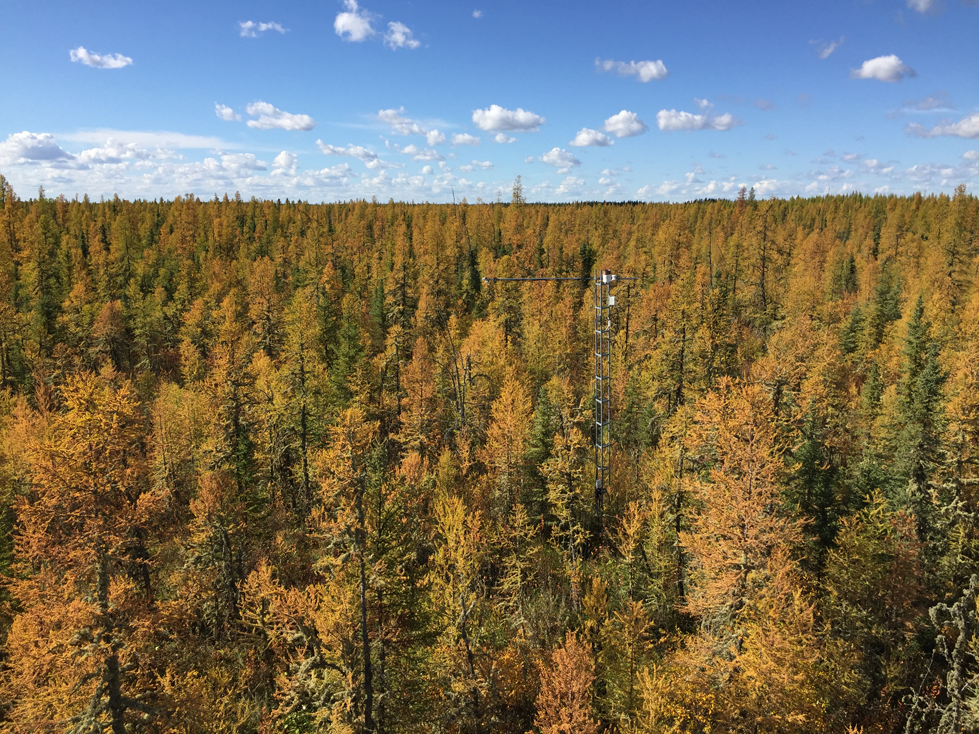Projects
Seasonality of photosynthesis of temperate and boreal conifer forests across North America

Collaborative partner (NSF Macrosystems Biology)
NSF Proposal abstract:
The climate of the Earth is warming due to increased carbon dioxide (CO2) in the atmosphere, a result primarily of combustion of fossil fuels to provide energy for human activities. Forests worldwide are helping to mitigate the atmospheric increase. Forests absorb more CO2 now than in prior decades, slowing the increase and benefiting society. In response to warming, the timing and magnitude of photosynthesis by land plants is changing in many locations, making it difficult to predict how forest carbon cycle feedbacks may affect future climate. Satellite remote sensing indicates that deciduous forests across North America have generally responded to environmental change by extending their growing season, with earlier spring leaf flush and later fall leaf drop. However, we do not understand how evergreen coniferous forests respond to warming because of limitations of traditional remote sensing techniques. Scientists also need better understanding of physiological processes that allow conifers to withstand cold winters. This study will link observations of reflected and emitted light from conifer forests at scales from leaf to forest canopy to satellite, to focus on seasonality of photosynthesis by conifer forests in space and time. The research will utilize cutting-edge scientific infrastructure built by the National Ecological Observatory Network (NEON) in forests from Florida to Alaska. This work will document the variations in physiology that occur in forests experiencing winters of varying severity, to refine and test models of photosynthesis to predict the critically important role of forests in mitigating future environmental change. This project will benefit ecological scientists by improving techniques in satellite remote sensing to quantify seasonality of conifer photosynthesis across North America. The project will engage the public by conducting science outreach efforts at the Natural History Museum of Utah, providing interactive resources to help visitors connect changes observed in their backyard to similar ecosystems across the continent.
Plants are frequently exposed to more sunlight than they can use for photosynthesis, even when weather conditions are favorable, and without protective mechanisms, tissue damage would result. Plants have evolved elaborate physiological processes to safely dissipate excess sunlight energy. During the growing season, this involves light-dependent, reversible cycling of carotenoid pigments of the xanthophyll cycle, a highly-conserved photoprotective process across the plant kingdom. However, during cold winters, the xanthophyll pigments participate in an alternate, poorly-understood light-independent process, remaining in photoprotective mode during both the day and the night. Both photoprotective types involve seasonal pigment and physiological changes that alter leaf color, and affect fluorescence emission by chlorophyll molecules. Using a variety of tower- and satellite-based instruments, these physiological changes can be detected via light reflected from vegetation (as the photochemical reflectance index, the chlorophyll/carotenoid index, and others) and via solar-induced fluorescence. The project’s overall objective is to quantify spatial and temporal variability in forest photosynthetic capacity of conifer forests across North America, using NEON and other infrastructure. We will link observations of vegetation reflectance and fluorescence with high temporal and spatial resolution (tower-based spectroscopy) to tower-based carbon fluxes, conifer-needle-level photosynthesis and pigment composition. These data will be assimilated to refine and test models of seasonal forest photosynthesis and provide new tools to launch a continental-scale observational framework to quantify photosynthetic response to environmental change over the 30-year NEON lifetime.
This award reflects NSF’s statutory mission and has been deemed worthy of support through evaluation using the Foundation’s intellectual merit and broader impacts review criteria.